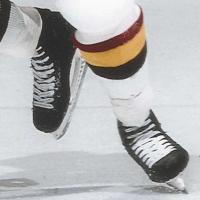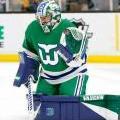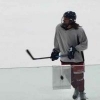Slate
Blackcurrant
Watermelon
Strawberry
Orange
Banana
Apple
Emerald
Chocolate
Marble
Slate
Blackcurrant
Watermelon
Strawberry
Orange
Banana
Apple
Emerald
Chocolate
Marble


shooter27
Members+-
Content Count
1509 -
Joined
-
Last visited
-
Days Won
8 -
Feedback
100%
shooter27 last won the day on September 12
shooter27 had the most liked content!
Community Reputation
122 ExcellentEquipment
-
Skates
Bauer One95
-
Hockey Bag
Easton
-
Shin Pads
Jofa 5030 15"
-
Elbow Pads
TPS 500 13"
-
Shoulder Pads
Sher-Wood Tradition 5030
-
Pants
Bauer Vapor Girdle
-
Helmet
Easton Stealth S9 Pro
-
Gloves
CCM Pro Tacks Pro Stock
-
Stick
Bauer One90 Naslund
Profile Information
-
Spambot control
123475982
Contact Methods
-
Website URL
http://
-
ICQ
0
-

TPS Response Sticks: Back For Another Iconic Shift
shooter27 replied to A2rhino's topic in Ice Hockey Equipment
I don’t know about what they’re producing now. But I will agree that the XN10 was an outstanding stick. People really liked the Response too. -
Was moving this week and came across these blasts from the past. Brought back a lot of memories.
-
https://www.themiddlemarket.com/latest-news/w-graeme-roustan-acquires-true-hockey For those who the name W. Graeme Roustan rings a bell - he led the deal when Nike sold Bauer in 2008. He and Kohlberg & Co (PE firm) bought Bauer and he served as the Chairman of Bauer.
- 1 reply
-
- 1
-

-
I’m sure all the ongoing macroeconomic issues aren’t helping. Is that a sufficiently apolitical way to say that so neither side can get mad at me? 🙄
-

Help identifying year/info on these Easton Ultra Lite Pro's
shooter27 replied to RodneyPierce's topic in Ice Hockey Equipment
Love seeing that catalog after all these years. I believe that was the second year of the Synergy (the first year didn’t have any Grip models). -
Has anyone tried this model (https://tackla.eu/tuote/tackla-x1-breezer-prozone-ice-hockey-girdle-sr/)? I can’t tell where it sits in the lineup but based on the pricing I would guess it’s meant to be the premium version. I would love to try these but my problem is I need L+1” sizing (6’3” with a 33” waist) so I have to stick with models that have adjustable legs. Back in the day Tackla used to be awesome regarding doing custom leg lengths, back when they used to do euro sizing on the pants and you could really dial things in. I’m sure they wouldn’t do that for a girdle today but I wish they would.
-
And those Vapor XX’s only had a little red dot in the flex notch on the facing. It wasn’t till the XXX that red became prevalent.
-
Saw this on the Spittin Chiclets IG. New Vapor 10s??? Maybe a limited edition like the 692 Tacks? Anyone know anything about these? https://www.instagram.com/p/DGtbzQ-PuGu/?igsh=bnh6ZDY2N2RiYXV4
-

Los Angeles Store - Opening in January
shooter27 replied to VegasHockey's topic in General Hockey Discussions
Place looks great. I used to live in LA and would’ve loved to have a shop like this nearby. I’m curious, what are the two red Edge machines? -
I was going to guess it had been exposed to significant heat. Like left in the car trunk during hot summer days.
-

Goaltending basics resources
shooter27 replied to MyBoxersSayJoe's topic in Fundamentals and Techniques
Another question from a non-goaltender. We all have seen how popular the RVH has become and we've also all heard the debate about its usage given the fact that it has created opportunities for high short-side or bank shot goals that we never would've seen back in the days when goalies stood upright against the post. To me, those goals are bad goals and they are the result of faulty usage of the technique. But, I've seen comments from multiple NHL goalies saying that those goals are "not on us." So my question is this: Does the advantage gained from the RVH - namely the ability to push across and react to the cross-ice pass better - outweigh the risk associated with opening up those short-side opportunities? As a non-goalie my gut says no. It seems to me that whatever advantage you gain from being in the RVH vs. standing up against the post (or using the basic VH) will save fewer goals than you'll let up on those short-side shots - especially when accounting for how deflating those goals against are to the team. That being said, I'm totally open to hearing from the goalies here as to why I'm wrong on the topic. -

Goaltending basics resources
shooter27 replied to MyBoxersSayJoe's topic in Fundamentals and Techniques
Weird question for everyone. I heard someone talking about Flex Potvin on a podcast recently and it reminded me that when he first came into the league he held his glove in an odd way. When he first game in he held his glove with the palm facing up towards the ceiling, sometimes even back towards himself (see the pictures below). Anyone know why he did this? Or if there were any advantages of that? -
Yeah, I’ve been looking too. Closest I found are these https://www.greatsaves.org/product-page/skate-lace-eliminators anyone have experience with those?
-
Any idea where to find those these days? I've been looking for a new pair for years. The 55flex website doesn't exist any longer.
-
They didn’t use the redline for offsides (2 line) passes. Still not sure how they judged icing though.




